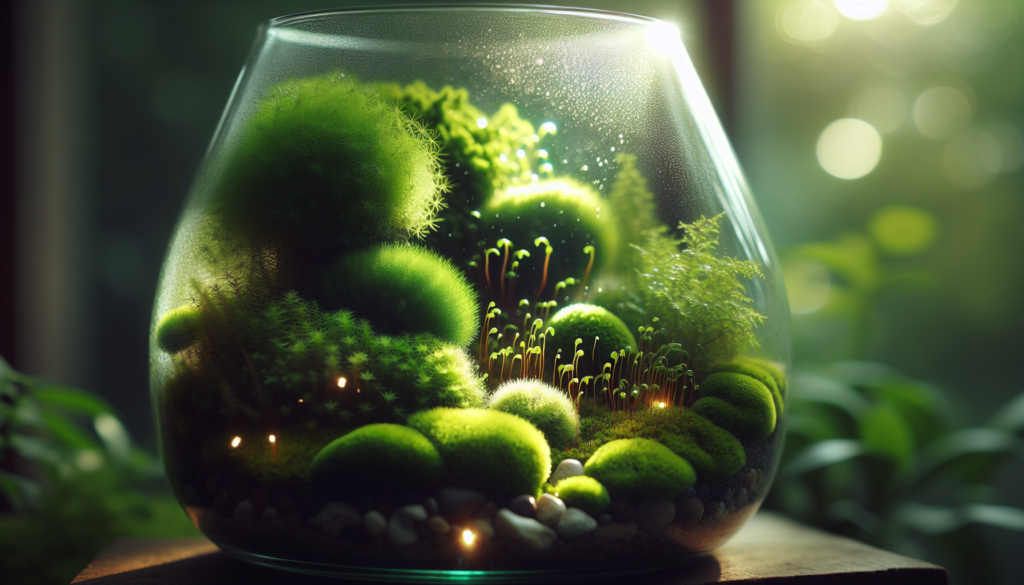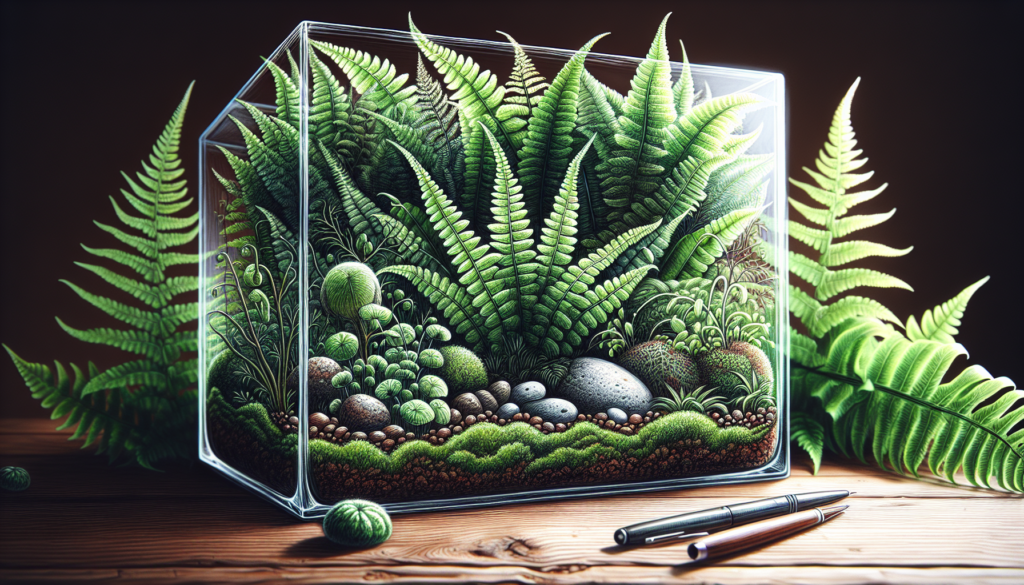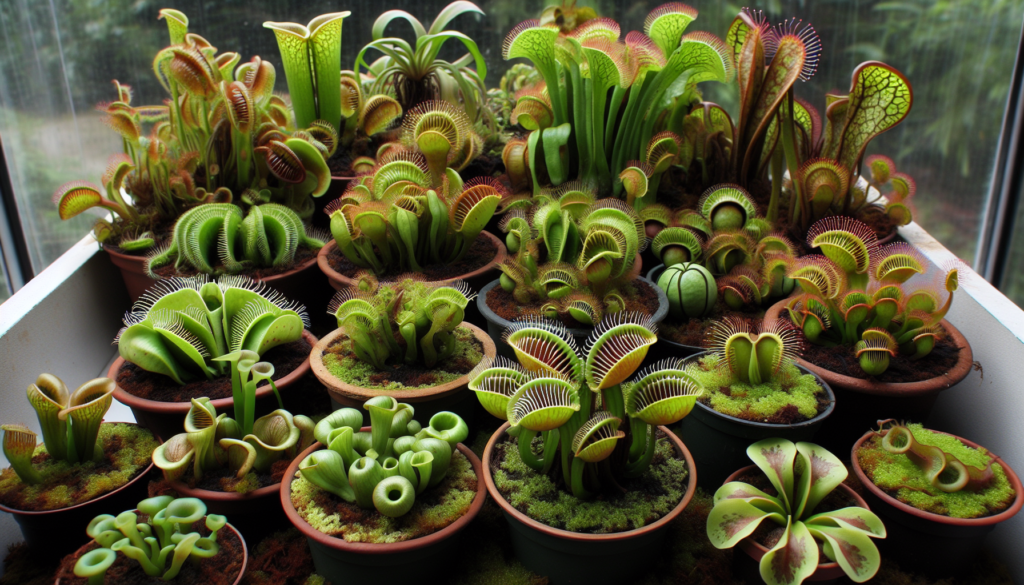Creating a thriving terrarium starts with picking the right plants. Lighting is a big deal here, and understanding how different types of artificial lighting can help your plants grow is key to their success.
Why Lighting Matters for Terrarium Plants
Lighting is like the lifeblood for your terrarium plants. It’s what keeps them healthy and growing. But figuring out the right lighting can be tricky because our eyes aren’t great at judging light levels. To make sure your plants get what they need, you’ve got to know their specific lighting needs.
Tropical plants, for example, love bright, indirect light, similar to what they’d get in a rainforest. Light is crucial for photosynthesis, the process plants use to turn light into energy. Without enough light, your plants might grow slowly, lose their color, or even start to die.
Types of Artificial Lighting for Terrariums
Sometimes, natural light just doesn’t cut it, and that’s where artificial lighting comes in. LED grow lights are a favorite because they offer a full spectrum of light that you can tweak to fit your plants’ needs. They’re energy-efficient, last a long time, and come in different color temperatures to support various growth stages. They’re perfect for making sure your terrarium gets the right light, especially if you have a big or complex setup.
Grow lamps are another good option, especially for smaller, tabletop terrariums. When picking a grow lamp, go for a white light instead of those multi-colored ones. A Sansi grow bulb is a solid choice—it’s affordable and gives off a balanced light that helps plants grow well.
If you’ve got a tank-style terrarium, aquarium lights can be super handy. These strip lights can light up the whole container evenly and are easy to adjust to fit your plants’ needs.
Remember, different plants need different amounts of light, so do your homework and pick plants that match your terrarium’s light conditions. For more tips on picking the best plants, check out our article on terrarium plants for beginners.
By understanding the role of lighting and the types of artificial lights available, you can create the perfect environment for your terrarium plants to thrive. The right lighting will keep your plants healthy and vibrant, making your terrarium a beautiful addition to your home.
Plants for Low-Light Terrariums
If your terrarium doesn’t get a lot of light, you’ll need to pick plants that can handle low-light conditions. Even low-light plants need some light to grow, so it’s important to get this right.
What Tropical Plants Need
Tropical plants are popular for terrariums because they look lush and green. These plants are used to the shaded understory of rainforests, where they get bright, indirect light. To mimic this in your terrarium, you need to provide similar lighting conditions.
Tropical plants usually have big, green leaves that help them capture as much light as possible. They’ve adapted to get enough light to photosynthesize and grow, even in low-light conditions. But remember, they still need some light to stay healthy.
Lighting for Low-Light Plants
Most low-light plants don’t need super bright light, but they do need enough to grow. Putting your terrarium in direct sunlight can be a bad idea because the glass can magnify the light and burn the plants. It can also make the terrarium too hot, which most plants can’t handle.
To keep your low-light plants happy, place your terrarium in a spot with bright but indirect light. This could be near a window with filtered light. If your terrarium isn’t getting enough light, you can use LED grow lights or fluorescent lights to give it a boost. These lights are great for making sure your plants get the light they need.
Keep an eye on your plants and adjust the lighting if they’re not doing well. Finding the right balance of light is key to keeping your low-light plants healthy.
In the next section, we’ll look at different plants that do well in various light levels, from shade-tolerant to bright-light plants. Stay tuned to find out which plants are best for your terrarium!
Plants for Different Light Levels
When picking plants for your terrarium, you’ve got to think about their light needs. Different plants need different amounts of light, and giving them the right conditions is crucial for their growth. Let’s look at some plants that do well in different light levels.
Shade-Tolerant Plants
Shade-tolerant plants are great for terrariums that don’t get a lot of light. They can handle low-light conditions but still need some light to grow. For tropical plants to do well, they need bright, indirect light like they’d get in a rainforest.
To give shade-tolerant plants the light they need, you can use a half-length Bio Dude Solar Grow or a half-length Bio Dude Glow & Grow. These lights are usually on for 4-6 hours a day, which is enough to keep the plants happy without overdoing it.
Moderate-Light Plants
Moderate-light plants need more light than shade-tolerant ones. They do well in terrariums that get a moderate amount of light throughout the day. Giving them the right light is crucial for their growth and health.
For moderate-light plants, you can use a full-length Bio Dude Solar Grow or a half-length Bio Dude Glow & Grow. These lights provide all-day exposure, making sure the plants get enough light to photosynthesize and grow.
Bright-Light Plants
Bright-light plants need a lot of light to thrive. They’re perfect for terrariums that get plenty of light. Giving them enough light is crucial for their photosynthesis and overall health.
For bright-light plants, you might need at least two full-length Bio Dude Solar Grow lamps or one full-length Bio Dude Glow & Grow lamp. These lights provide all-day exposure, making sure the plants get the intense light they need to grow well.
When setting up your terrarium, remember that most plants don’t need super bright light. Putting the terrarium in direct sunlight can burn the plants and make it too hot inside. Most plants can’t handle too much heat, so it’s best to keep terrariums out of direct sunlight.
By picking the right plants for your terrarium’s light conditions, you can create a thriving environment for your reptiles and add some greenery to their home. Keep an eye on the lighting levels and adjust as needed to keep your plants healthy.
Perks of Bioactive Enclosures
Bioactive enclosures are awesome for reptiles because they mimic their natural habitat and keep them healthy. By adding live plants and creating self-sustaining ecosystems, these enclosures offer enrichment, health benefits, and a more natural living space for reptiles.
Why Live Plants Matter
Live plants do more than just look good in a bioactive setup. They act as natural humidifiers, boosting the humidity levels and creating microclimates that suit different reptile species. Plants also help clean the air by filtering out toxins and adding oxygen, making the enclosure healthier for your reptile.
Live plants also encourage natural behaviors in reptiles. They provide hiding spots, climbing opportunities, and places to explore, which can keep reptiles active and mentally stimulated. Your reptiles might rub against the plants, bask under their leaves, or even nibble on them, just like they would in the wild.
Self-Sustaining Ecosystems
One of the coolest things about bioactive enclosures is that they create self-sustaining ecosystems. These setups include live plants and a “clean-up crew” of invertebrates like isopods and springtails. The plants help break down waste, and the invertebrates eat organic matter, keeping the enclosure cleaner with less work from you.
These ecosystems also help regulate moisture levels and prevent harmful bacteria from building up. The invertebrates aerate the substrate, keeping it from getting compacted, and help cycle nutrients, making the environment healthier for your reptile.
Enrichment and Health Benefits
Bioactive enclosures give reptiles a chance to engage in natural behaviors and enjoy a more stimulating environment. The live plants, climbing structures, and hiding places encourage reptiles to explore, forage, dig, burrow, and climb, which can keep them active and reduce boredom. This activity can improve muscle tone, body condition, and reduce the risk of obesity.
Being able to exhibit natural behaviors and explore different microclimates can also help reptiles regulate their body functions. By finding areas with the right light, heat, and moisture levels, reptiles can thermoregulate and stay healthy.
Overall, bioactive enclosures offer a more natural and enriching habitat for reptiles. They mimic the reptile’s natural environment, reduce stress, promote physical activity, and improve overall health. By adding live plants and creating self-sustaining ecosystems, these enclosures provide a closer-to-nature experience for your reptiles.
For more on the best terrarium plants for reptiles in bioactive enclosures, check out our section on Recommended Terrarium Plants.
Top Terrarium Plants
To make your reptile’s home look great and feel natural, you need to pick the right plants. Here are four top terrarium plants that are perfect for reptiles:
Boston Fern (Nephrolepis exaltata)
The Boston Fern is great for terrariums that need higher humidity levels. This fern can absorb moisture from the air, creating a humid microclimate inside the terrarium. Its dense foliage provides shade and a comfy hiding spot for reptiles. Plus, it adds a touch of natural beauty to the terrarium.
Snake Plant (Dracaena trifasciata)
The Snake Plant, also known as Mother-in-Law’s Tongue, is tough and can handle different conditions in reptile habitats. It’s low-maintenance and can tolerate various lighting conditions. The Snake Plant also improves air quality by filtering out toxins and releasing oxygen, making the environment healthier for your reptiles and you.
Neoregelia Bromeliads
Neoregelia Bromeliads are popular for their unique look and ability to create a stunning environment. These bromeliads have a rosette shape with vibrant colors like reds, pinks, oranges, and yellows. They add a splash of color to the terrarium and provide a comfy habitat for reptiles. Neoregelia Bromeliads thrive in the humid conditions of terrariums, making them a great choice for reptile enclosures.
Sphagnum Moss
Sphagnum Moss is versatile and beneficial for terrariums. It helps retain moisture, creating a humid microclimate that’s essential for reptiles needing higher humidity levels. Sphagnum Moss also acts as a comfy substrate for burrowing reptiles, providing a natural environment for them to thrive. This moss not only looks good but also contributes to the overall well-being of your reptiles.
By adding these top terrarium plants to your reptile’s habitat, you can create a more natural and stimulating environment. Make sure to consider your reptiles’ specific needs when picking plants and ensure the lighting, humidity, and other conditions are right for them. For more on terrarium plants and their care, check out our article on terrarium plants for beginners.
Tips for Terrarium Plant Care
Taking good care of your terrarium plants is crucial for their health and longevity. Here are some tips to keep your plants thriving.
Avoid Direct Sunlight
While plants need light, direct sunlight can be harmful to terrarium plants. The glass can magnify the sunlight and burn the plants. It’s best to keep your terrarium out of direct sunlight to prevent overheating and damage. For more on common terrarium mistakes, check out our article on common terrarium mistakes.
Provide Adequate Indirect Light
Even though you should avoid direct sunlight, your plants still need some light. If your terrarium isn’t getting enough natural light, you can use grow lights or fluorescent lights. Placing the terrarium near a window with good but indirect light can also help. For more plant options for low-light conditions, visit our article on indoor plants for terrariums.
Prevent Heat Exposure
Keeping the temperature right is crucial for your terrarium plants. Placing the terrarium near heat sources like radiators or heating vents can expose the plants to too much heat, which can be harmful. High temperatures can cause wilting, leaf burn, and even death. Keep your terrarium away from direct heat sources to maintain a suitable environment. For more on temperature control, check out our article on terrarium plants for beginners.
Pruning and Maintenance
To keep your terrarium plants looking good and healthy, regular pruning and maintenance are necessary. Over time, plants might get leggy or overgrown, blocking the view of other elements in the terrarium. Trim the plants when they get too big or crowded to keep things looking neat. Pruning also promotes new growth. Be careful not to disturb the roots of other plants while pruning. For more on caring for specific plants, check out our article on ferns for terrariums.
Disease Prevention and Plant Replacement
If you notice a plant showing signs of disease, dying, or not thriving, remove it quickly to prevent the problem from spreading. Use a small shovel, terrarium tool, or even chopsticks to carefully remove the affected plant without disturbing the roots of neighboring plants. Replace it with another plant of similar size and with the same moisture and light needs to keep the balance in the terrarium. For more on disease prevention and plant replacement, check out our article on best plants for closed terrariums.
By following these tips, you can create an environment where your terrarium plants can thrive. Keep an eye on their lighting, temperature, and overall health regularly. With proper care, your terrarium plants will provide a beautiful and vibrant display that enhances your living space.






